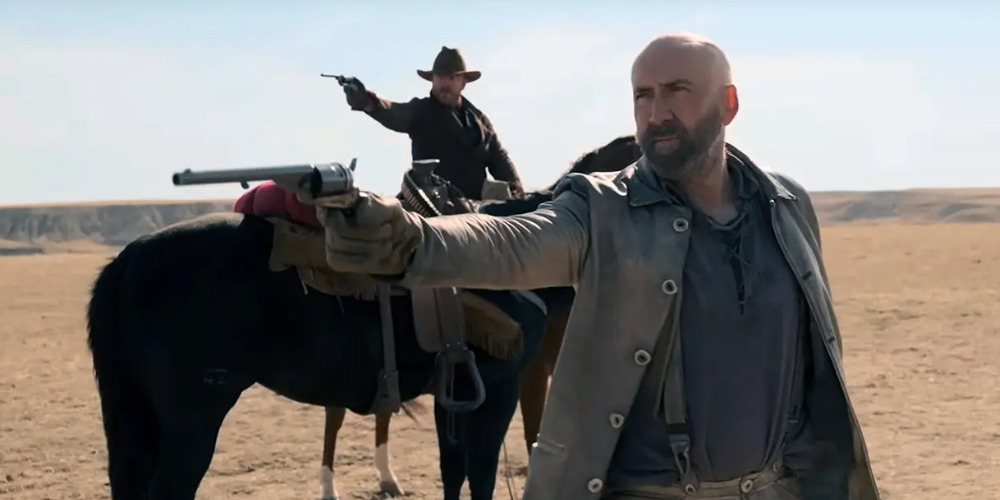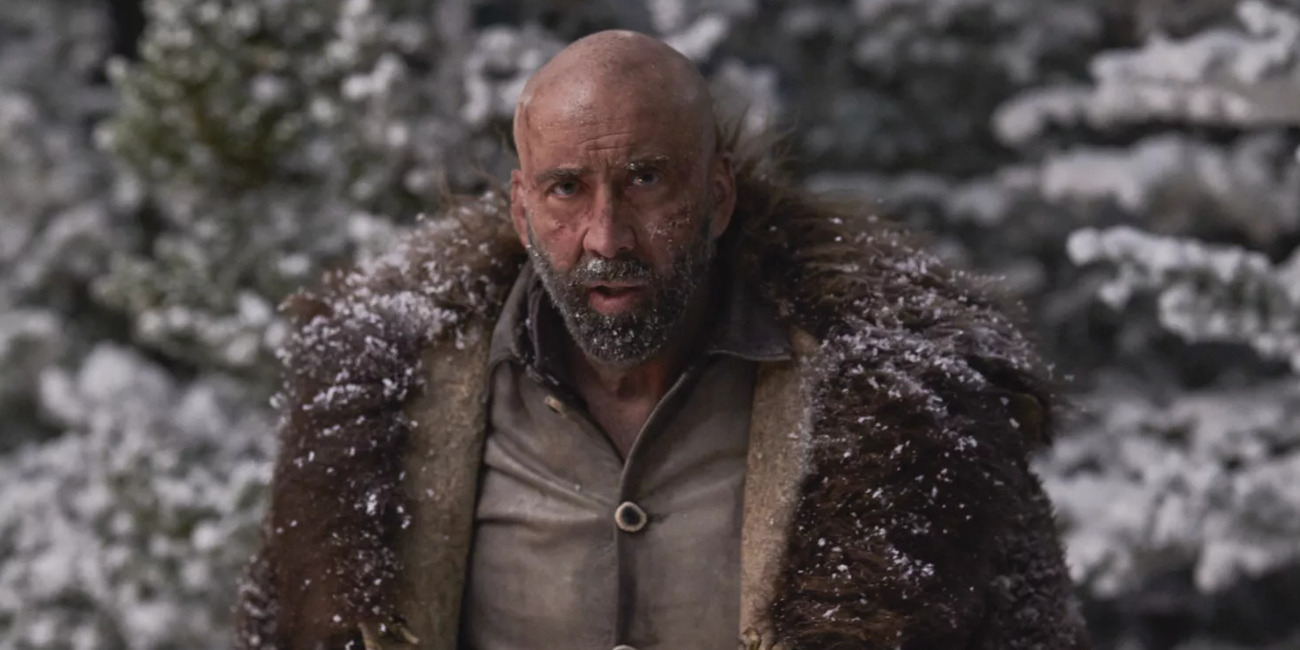‘Butcher’s Crossing,’ the Western drama film revolving around the 19th-century buffalo hunting culture, finds a historical setting in 1874, Kansas, where a large buffalo hide trading center resides. However, where JD McDonald and his hunting parties operate in moderate but numerous hauls, Miller, a seasoned buffalo hunter, seeks massive profits through a hunting haul like no other secured with the hunt of a sizeable buffalo herd. Consequently, as a wide-eyed, adventure-seeking William Andrews arrives in town, Miller finds the funding and companionship to undertake his grand hunt, resulting in an arduous journey tinted with frenzied obsession.
Miller’s infatuation with venturing on a noteworthy buffalo hunt, distinct from his contemporaries, forms the film’s narrative center. Through his consistently brutish actions against the preyed-upon buffalo hunt, the story retains a philosophical exploration of destructive fixations as well as a social analysis of wicked hunting practices. Therefore, given the historical context behind the hunter’s character, the question about Miller’s basis in reality remains imminent.
Miller: The Literary Hunter From a Historical Fiction Story
Even though ‘Butcher’s Crossing’ takes place in a historical setting with the period-appropriate context of bison hunting at the plot’s center, the film’s story itself remains a fictitious piece of work. The story has a basis in John Williams’ eponymous novel, published in 1960, which follows a similar storyline to its on-screen adaptation. Although the film strays from the source material in certain aspects, it remains authentic to the story’s base framework, including resembling characters. Consequently, Nicolas Cage’s on-screen portrayal of Miller holds a basis in the identically named hunter from Williams’ novel.

For the most part, Miller’s narrative within the story— in terms of themes— remains his almost maniacal obsession with a mass buffalo hunt, wherein he aims to collect more hide than he can reasonably carry out of the mountains with him. Viewers may recognize this one-minded focus on a man vs. nature rivalry from the renowned 1851 novel, ‘Moby-Dick or, The Whale’ by Herman Melville. However, Miller’s infatuation with his hunt has an added layer of nuance through its connection to American history.
While Miller’s character remains a stellar study of obsession’s self-destructive nature, it also holds significance as a metaphor for the 19th-century bison hunt that nearly drove the species to extinction. According to historical accounts, buffalo hunting, also known as bison hunting, remained such a frenzied phenomenon in the late 1800s that the winter of 1872-73 saw a trade of more than 1.5 million hides within the year alone.
Although bison were hunted long before the arrival of white settlers on native land, the 1800s brought a unique brand of destruction for the animals. The settlers found numerous motivations for hunting buffalos, including their commercial value. However, the significance of the animal in certain indigenous cultures certainly played a vital part in the same.
James Throckmorton, a Texan congressman of the time, is remembered to have believed, “It would be a great step forward in the civilization of the Indians and the preservation of peace on the border if there was not a buffalo in existence.” When the same philosophy is put within the context of the buffalo’s vitality as a food source among the Natives, it becomes evident that the animal’s near extinction greatly contributed to the community’s historical genocide.
In that regard, Miller’s obsessive need to kill a buffalo herd seems to hold historical significance as a metaphor for white settlers’ frantic 19th-century bison hunt. Cage discussed the same in an interview with The Hollywood Reporter, where he said, “[And] In addition to the atrocity of the genocide, almost to the point of genuine extinction of the buffalo, was its direct connection with the First Nation. For Native American people, if you cut off the bison, you cut off the people— because they were a huge part of their life source. So I think Miller is not only villainous, but he also feels like an agent of that implicit genocide involving the Native Americans.”
Consequently, Miller’s character remains two-fold in his destructively obsessive storyline as a hunter. Nevertheless, despite the authenticity of his maddening ambition for glory or the historical relevance of his hunt, Miller is confined to the fictional world of ‘Butcher’s Crossing’ without any tangible, real-life inspiration behind him.
Read More: Buther’s Crossing: Is There Any Truth Behind Nicolas Cage’s Movie?


You must be logged in to post a comment.